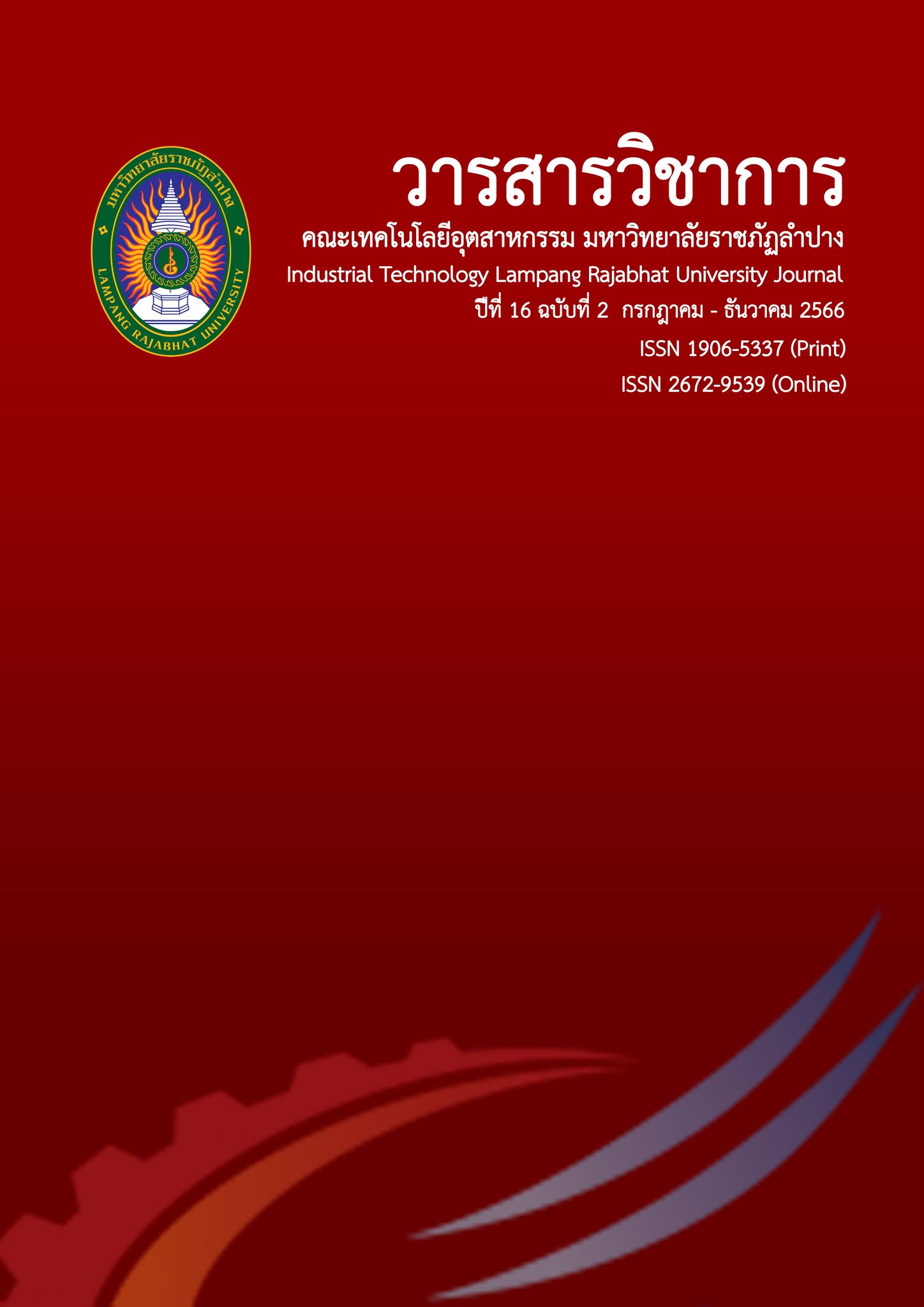Low-cost Household Wastewater Treatment for Communities along the Wang River Lampang Province
Keywords:
Wastewater treatment system, Household wastewater, Community along the Wang River, Water source, LampangAbstract
This research aimed to construct a low-cost household wastewater treatment machine for the community along the Wang River in Mueang District, Lampang Province, and to assess the efficiency of the community wastewater treatment machine. The study involved surveying the discharge of untreated household wastewater into the river, collecting wastewater samples for laboratory analysis, and testing the efficiency of oil absorption using wood charcoal and porous ceramic. The study also included designing and constructing a household wastewater treatment machine, with subsequent calculations of its efficiency. The study found that the average Biochemical Oxygen Demand (BOD) value, representing the organic content of household wastewater, was 240 milligrams per liter. The values for oil and fat were measured at 1,488 mg/L. The results of the study on the efficiency of wood charcoal in absorbing fat and oil revealed that a charcoal depth of 0.5 centimeters achieved the highest oil absorption at 91.17%. At the same time, porous ceramics of all sizes demonstrated an average oil absorption rate of 25%. The optimal combination of charcoal and porous ceramic was determined through various ratios. Ratios of 4:1, 1:0.5, and 2:1 exhibited the ability to absorb oil up to 99.82%, 99.78%, and 98.29%, respectively. Additionally, a comparison of the production costs of household wastewater treatment machines in the study with those available in the market showed that the prices in the study were somewhat lower, possibly due to the ease of finding materials and users' ability to assemble the machines.
References
Jiwasantikan, K. (2022, October). Mayor of Lampang Municipality, personal communication.
Kaji, R., Muranaka, Y., Otsuka, K., & Hishinuma, Y. (1986). Water absorption by coals: effects of pore structure and surface oxygen. Fuel, 65(2), 288-291.
Khaiket, B., Angsungnoen, S., Kaewdam, J., & Bunprom, P. (2011). Efficiency of Grease Trap from Recycled Material as Wastewater Treatment in Soi Soda Community, Bangkok. Journal of Environmental Management, 7(1).
Kiddee, P., Chanchaiprasert, U., Thongnuaykhan, W. & Chaicharoen, C. (2018). Efficiency of Hanguana malayana (Jack) Merr for Oil Adsorption. PSRU Journal of Science and Technology, 3(2), pp.35–45.
Khunyotying, T. (2012). Clay body for ceramic filter instrument use for potable water filtration by using kaolin waste as compound for enhances porosity in clay body. Industrial Technology Journal, Lampang Rajabhat University,
pp.65–77.
Ministry of Science Announcement Technology and Environment. (1994). Setting standards for controlling wastewater drainage from certain types and sizes of buildings, published in the Royal Gazette. General announcement, V. 111, special section 9N.
Nyika, J., & Dinka, M. (2022). Activated bamboo charcoal in water treatment: A mini-review. Materials Today: Proceedings, 56, 1904-1907.
Pollution Control Department. (2003). Guidelines for managing sludge from Wastewater treatment system Project to create criteria and guidelines for waste management Sediment from wastewater treatment systems.
Pollution Control Department Ministry of Natural Resources and Environment. (2017). Reducing and utilizing solid waste. Guidelines and prerequisites.
Sariphan, K. (2018). The adsorption of oil by agricultural waste and the briquette production from adsorbent. Journal of Renewable Energy for Community, pp. 10-16.
Tantichuwet, P. (2010). General education and desirable graduate characteristics in Malaysia and Singapore. Study by comparison with Thailand. In Sirichai Kanchanawasi (Editor), Driving the Quality of Thai Education [Proceeding]. National Academic Conference and Dissemination of Research Results. pp. 97–102.
Zereffa, E. A., & Bekalo, T. B. (2017). Clay Ceramic Filter for Water Treatment. Material Science & Applied Chemistry, 34(1).
Downloads
Published
Issue
Section
License
Copyright (c) 2023 Industry Technology Lampang Rajabhat University

This work is licensed under a Creative Commons Attribution-NonCommercial-NoDerivatives 4.0 International License.






